Is Sodium Percarbonate Better Than Sodium Carbonate for Laundry?
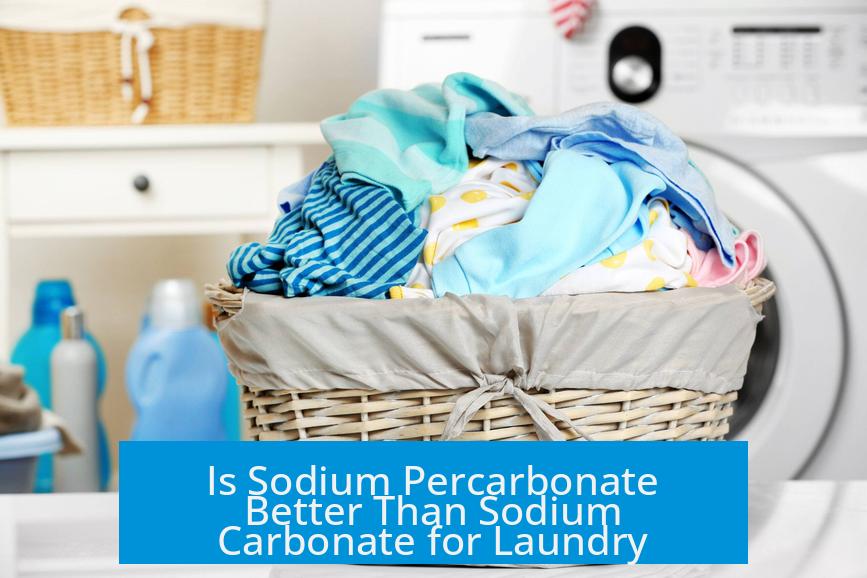
Sodium percarbonate is generally better for laundry than sodium carbonate because it combines the cleaning power of sodium carbonate with the stain-removing and disinfecting effects of hydrogen peroxide.
Composition and Chemical Behavior
Sodium percarbonate is a stable compound formed by sodium carbonate and hydrogen peroxide. When dissolved in water, it releases both sodium carbonate and hydrogen peroxide. Sodium carbonate alone, often called washing soda, mainly softens water and helps remove dirt by increasing pH.
Sodium percarbonate acts as an oxygen bleach. The hydrogen peroxide component breaks down stains and kills microbes, providing whitening and odor removal effects. Sodium carbonate contributes to water softening but often in insufficient amounts for that purpose alone in typical laundry use.
Cleaning and Whitening Power
- Sodium percarbonate works as a mild, color-safe bleach. It whitens fabrics better than sodium carbonate by breaking down stains chemically rather than just mechanically.
- It removes a wide range of stains, including organic ones like sweat and food, by releasing oxygen radicals.
- The compound also controls odor by killing bacteria that cause smells, making it especially useful for gym clothes and other sweaty textiles.
Compared to chlorine-based bleaches, sodium percarbonate poses fewer risks. It does not produce fumes, is gentle on skin, and preserves fabric colors.
Water Softening and Usage Considerations
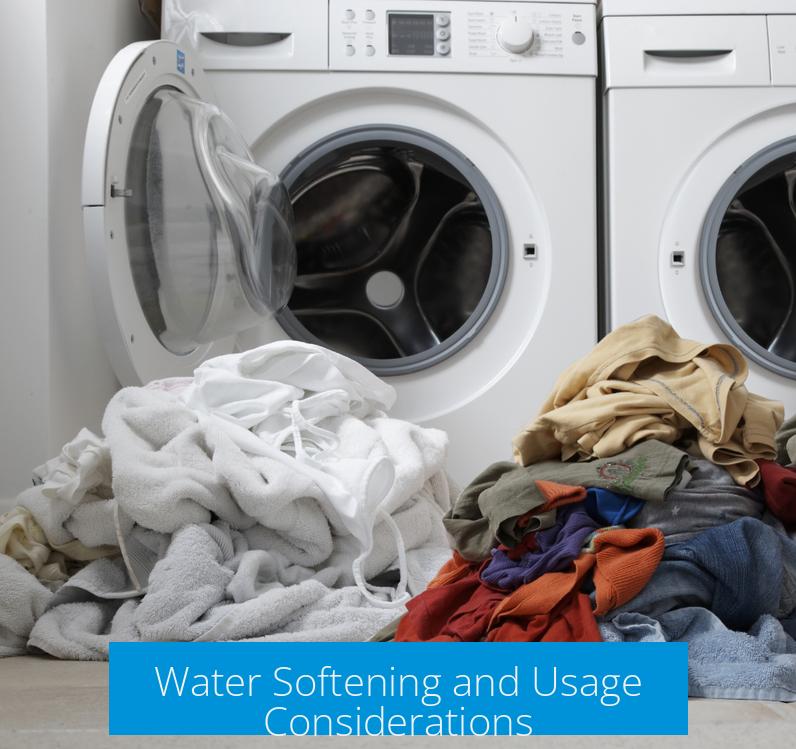
Though sodium percarbonate contains carbonate, its concentration is not typically high enough to significantly soften water during laundry. Its primary advantage is the oxygen bleach effect, not water softening.
Recommended dosage varies: approximately two tablespoons per normal laundry load. Smaller loads require less, about one tablespoon. Concentration is less critical since these products dilute in water.
Complementary Cleaning Agents
Enzymes complement sodium percarbonate by breaking down protein-based stains. However, sodium percarbonate remains crucial for treating oils and boosting overall detergent performance.
Key Takeaways
- Sodium percarbonate releases hydrogen peroxide and sodium carbonate, combining bleaching with basic cleaning.
- It whitens fabrics better and controls odors by killing microbes.
- Sodium carbonate alone primarily softens water and increases pH.
- Percarbonate is safer and gentler than chlorine bleach on fabrics and skin.
- Use about two tablespoons per load; enzymes help with protein stains.
Is Sodium Percarbonate Better than Sodium Carbonate for Laundry Purposes Since Percarbonate Already Has Carbonate in It?
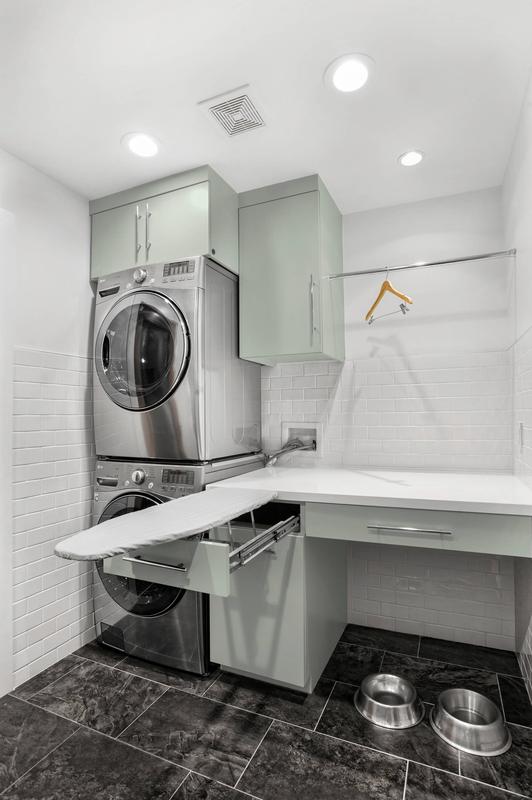
In a nutshell: Yes. Sodium percarbonate beats sodium carbonate on laundry duties, not just because it contains carbonate, but mainly due to its added oxygen bleaching power. Let’s unpack why this is true and what it means for your laundry day.
At first glance, you might wonder why bother with sodium percarbonate when sodium carbonate (aka washing soda) has been cleaning clothes for ages. After all, percarbonate is partly composed of carbonate, so logic might say, “Same stuff, right?” Not quite!
Understanding Their Chemistry: What’s Inside Matters
Sodium percarbonate is actually a compound combining sodium carbonate with hydrogen peroxide in a stable form. When dissolved in water, it splits into these two components. So, not only do you get the familiar sodium carbonate, but also hydrogen peroxide—a powerful oxygen bleach.
On the flip side, sodium carbonate on its own is a water softener, which can help your detergent work better by reducing water hardness. But it has no bleaching or disinfecting effect.
Oxygen Bleach vs. Water Softener: Different Jobs
Sodium percarbonate shines as an oxygen bleach. This means it helps whiten your laundry and effectively tackles stains by breaking down stubborn pigments. It also fights microbes that cause foul odors—think sweaty gym clothes. Meanwhile, sodium carbonate mostly just softens water, and doesn’t do much else.
For those who have used traditional chlorine bleach, sodium percarbonate offers a gentler alternative. It’s safe on colors, won’t leave behind that chlorine smell, and isn’t harsh on skin. So it’s like the friendly neighbor of bleach options—effective but less threatening.
Does Percarbonate’s Carbonate Soften Water Well?
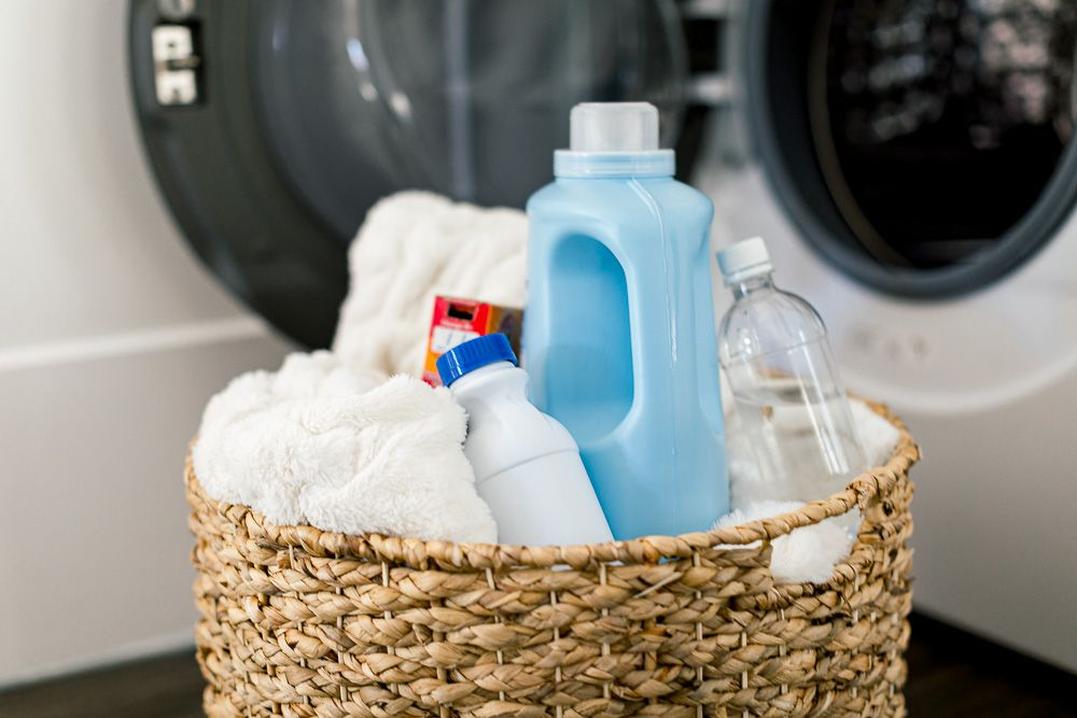
Although sodium percarbonate contains carbonate, the actual amount released in a typical laundry dose isn’t usually enough to notably soften hard water. So, if you’re aiming to soften water, relying solely on percarbonate won’t cut it. You still might want to supplement with additional water softening agents or rely on your detergent’s water softening capabilities.
How Much Should You Use? Dosage Tips for Best Results
Using sodium percarbonate in laundry is straightforward: two tablespoons per load is usually enough, or one tablespoon for smaller loads. The exact concentration doesn’t hugely matter for home use since most people dilute laundry products according to their machine’s water level.
Beware of cheaper products, though. They might skimp on active ingredients, so you may need to use more to get similar stain-fighting and whitening performance.
Combining Forces: Percarbonate and Enzymes for That Deep Clean
While sodium percarbonate is great at tackling oils and boosting detergents, it doesn’t handle protein-based stains (think food or sweat) as well. That’s where enzymes come in handy. Use enzyme boosters alongside sodium percarbonate and watch protein stains vanish like magic.
Real-Life Laundry Wins with Sodium Percarbonate
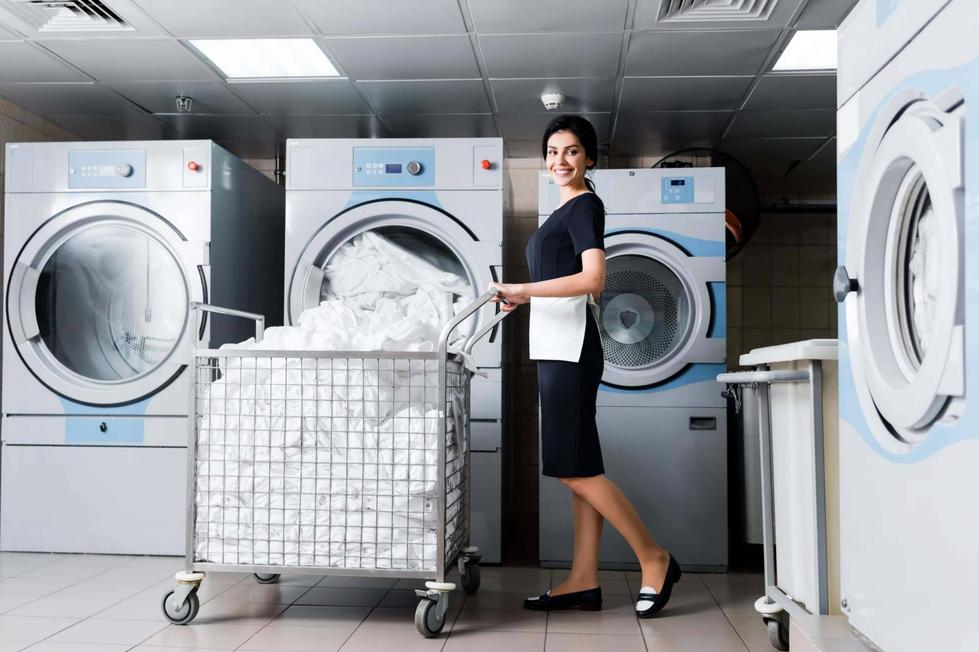
Imagine pulling out your favorite white shirt after a workout. It smells fresh, the sweat stains are history, and the fabric feels clean without the harsh bleach smell or skin irritation. That’s the percarbonate effect working its mild oxygen magic.
One user reported switching from just soda ash (sodium carbonate) to sodium percarbonate and noticed a big difference in stubborn stain removal. Their whites were brighter, and colored clothes stayed vibrant longer. Plus, no more burning smell or itchy hands after doing laundry.
So, Is Sodium Percarbonate Better Than Sodium Carbonate for Laundry?
Absolutely. While both share a common carbonate component, the added hydrogen peroxide in percarbonate brings powerful oxygen bleaching and odor-fighting benefits that sodium carbonate alone can’t provide.
| Factor | Sodium Carbonate | Sodium Percarbonate |
|---|---|---|
| Main Role | Water softener | Oxygen bleach + sodium carbonate |
| Stain Removal | Limited | Effective, especially on organic stains |
| Odor Control | Minimal | Kills odor-causing microbes |
| Safety on Colors | Safe | Safe, gentle bleach |
| Water Softening Effect | Good | Minimal at usual doses |
So why settle for just water softening when you can get the whole package? Sodium percarbonate upgrades your laundry from “just clean” to truly fresh and vibrant.
Final Thoughts: Making the Smart Laundry Choice
Next time you’re picking laundry boosters, remember that percarbonate isn’t just carbonate with a fancy name. It’s a clever combo delivering a triple whammy: stain removal, whitening, and odor control—without compromising fabric colors or your skin.
And if you’re battling tough protein stains? Team up percarbonate with enzymes for a powerhouse clean.
So yes, while sodium percarbonate does contain sodium carbonate, it’s the oxygen bleach factor that makes it *better* for laundry purposes. It’s a pricier option, sure, but the results? Worth every penny.
Ready to upgrade your laundry game? Grab some sodium percarbonate and see why it’s often called oxygen bleach’s best kept secret!
Q1: Does sodium percarbonate soften water like sodium carbonate does?
Sodium percarbonate breaks down into sodium carbonate and hydrogen peroxide in water. However, the amount of carbonate released is usually too low to significantly soften water in typical laundry doses.
Q2: How does sodium percarbonate improve stain removal compared to sodium carbonate?
Sodium percarbonate acts as an oxygen bleach, releasing hydrogen peroxide. This helps whiten clothes and remove tougher stains more effectively than sodium carbonate alone, which lacks bleaching properties.
Q3: Is sodium percarbonate safe for colored fabrics compared to other bleaches?
Yes. Sodium percarbonate is milder than hypochlorite bleach. It bleaches without damaging colors and doesn’t cause skin irritation or strong smells.
Q4: Can I use sodium percarbonate alone for all laundry needs?
It works best combined with enzymes or detergents. Enzymes break down protein stains while percarbonate handles oils and boosts cleaning power.
Q5: How much sodium percarbonate should I use per wash?
Generally, two tablespoons per load is recommended. For smaller loads, use one tablespoon. Adjust if your detergent has lower active ingredients.


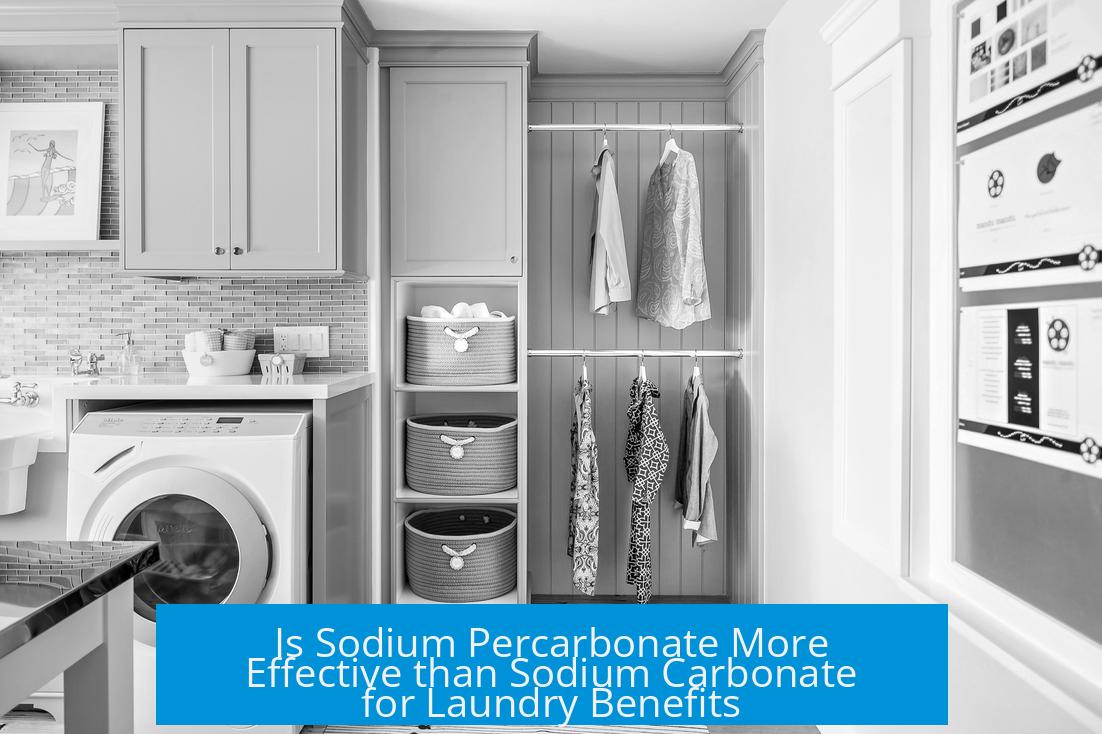

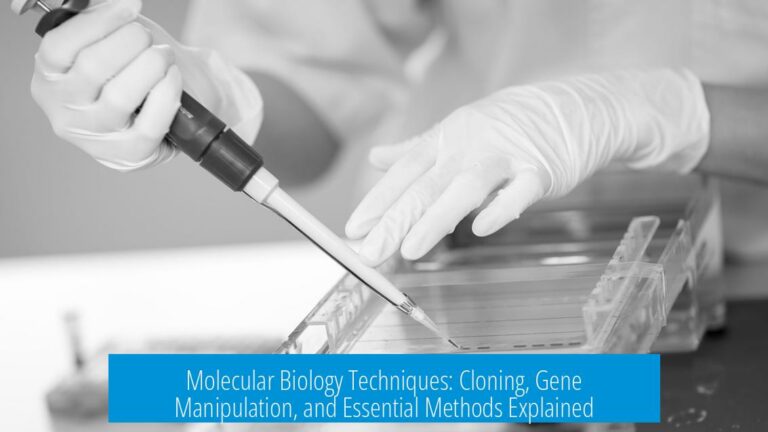
Leave a Comment